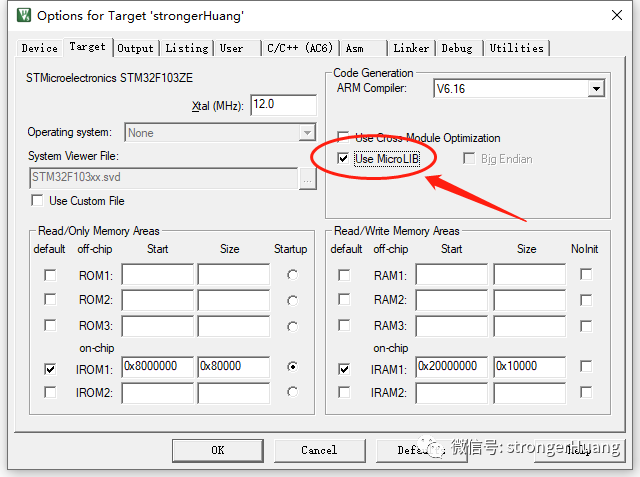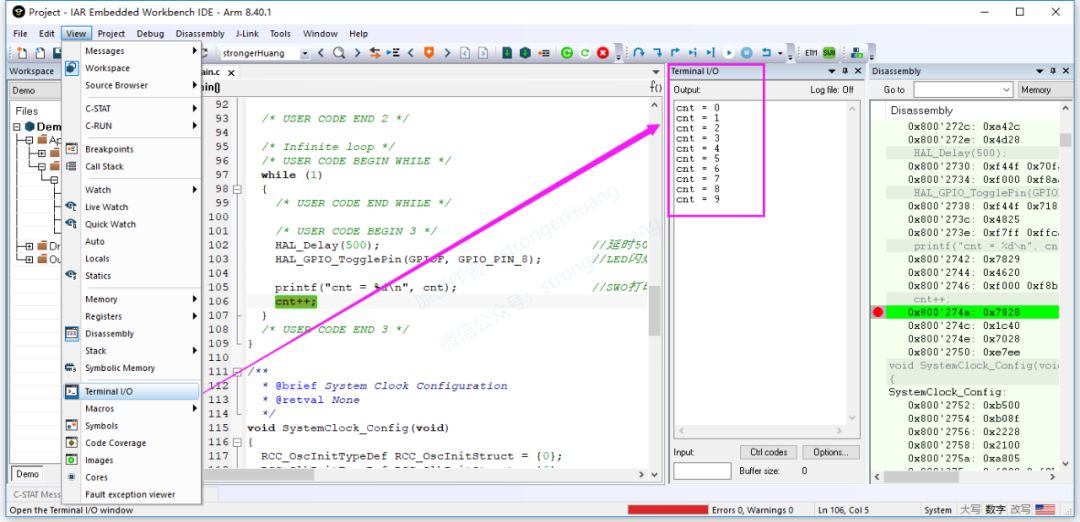Follow+Star PublicAccount, don’t miss exciting content
Author | strongerHuang
WeChat Official Account | Embedded Column
In MCU-based embedded software development, there may be situations where there is no extra storage space, thus failing to effectively save debug and log information locally.
In this case, outputting debug (Debug) and log (Log) information through some means becomes meaningful.
Below, we will discuss several points regarding outputting debug and log information in embedded development.
1Standard Library printf Direct Output
In MCU embedded development, outputting debug and log information through UART serial printf is the most common method.
In large systems like Linux and Windows, using the standard C library is not a problem, but on resource-limited platforms like MCU, a micro library is usually used.
1. Using Micro Library Configuration Method
In the IDE used, such as Keil and IAR, configuration in the project options is required to use the micro library properly.
Project -> Options for Target -> Target, check “Use MicroLIB”
Project -> Options for Node -> General Options -> Library Configuration, select “Full”
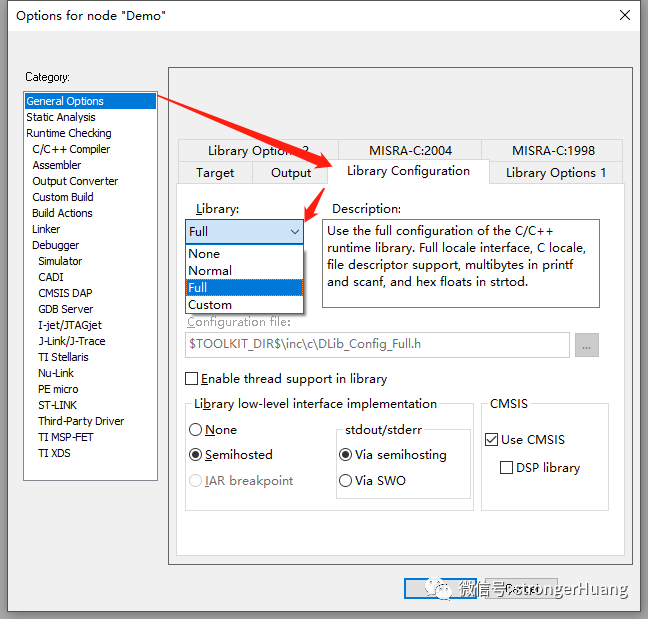
Additionally, there are four options for using the library in IAR:
Normal: Select the runtime library with standard configuration
Full: Select the runtime library with full configuration
Custom: Select a custom runtime library
For more information about the micro library and IDE configuration, refer to my articles:
What is the difference between Micro Library and Standard C Library?
Keil Series Tutorial 05_Project Target Option Configuration (1)
IAR Series Tutorial 06_Project Node Option Configuration (1)
To output information, you must have a path, whether it’s UART or CAN. Therefore, function redefinition is necessary.
Taking UART serial as an example, the most common method is:
#include <stdio.h>
int fputc(int ch, FILE *f){ DEBUG_SendByte((uint8_t)ch);
return ch;}
int fgetc(FILE *f){ while(USART_GetFlagStatus(DEBUG_COM, USART_FLAG_RXNE) == RESET);
return (int)USART_ReceiveData(DEBUG_COM);}
Of course, the specific implementation in the serial port is related to your underlying hardware.
With the above configuration, you can directly use the printf function.
In some cases, if you need to specify the output of debug or log information, you will need to customize the output format.
For instance: I want to set a “DEBUG switch”, during the development and testing phase, I need to turn on the switch, but after the product is mass-produced, I do not need to enable debug information output.
#define DEBUG(Type, ...) if(DEBUG_EN(Type))
{
printf(__VA_ARGS__);
}
Note:__VA_ARGS__ is a variadic macro that copies the content on the left side of the macro “…” to the position of __VA_ARGS__ on the right side.
Additionally: output log information with a “timestamp”:
#define DEBUG(Type, ...) if(DEBUG_EN(Type))
{
printf("%s:", GetTimeStr());
printf(__VA_ARGS__);
}
In actual projects, there may be many requirements, such as: logging with “sensor ID” for different types of sensors.
Therefore, the methods for outputting debug or log information may vary depending on the project’s complexity and requirements, and whether to implement them needs comprehensive evaluation.
Similar to UART serial output, SWO (Serial Wire Output) is also one of the methods, but it requires the MCU to support SWO functionality (many MCUs currently support it).
During online debugging, it can output to the IDE interface, for example:
It can also output offline to some tool interfaces, for example: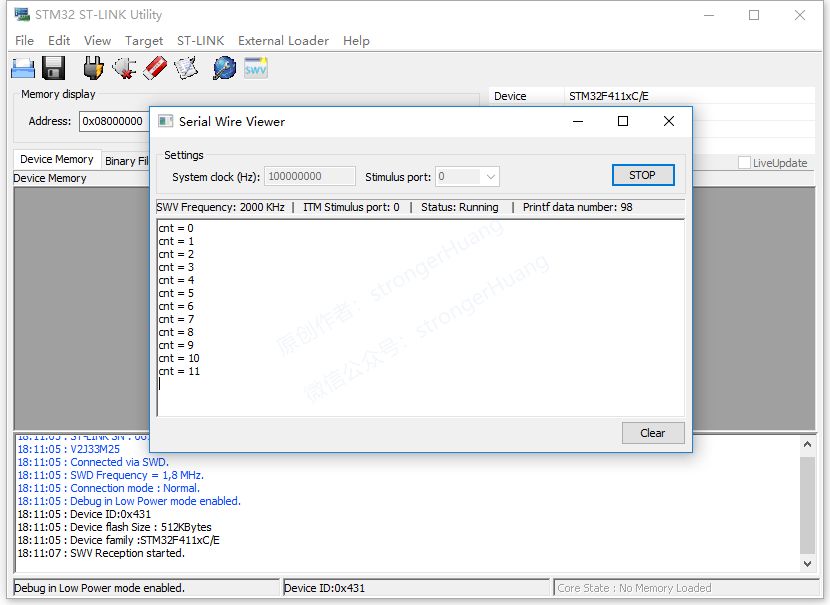 This section will not be discussed here, please follow the public account 【Embedded Column】, and reply with the keyword 【printf series tutorial】 for more details:
This section will not be discussed here, please follow the public account 【Embedded Column】, and reply with the keyword 【printf series tutorial】 for more details:
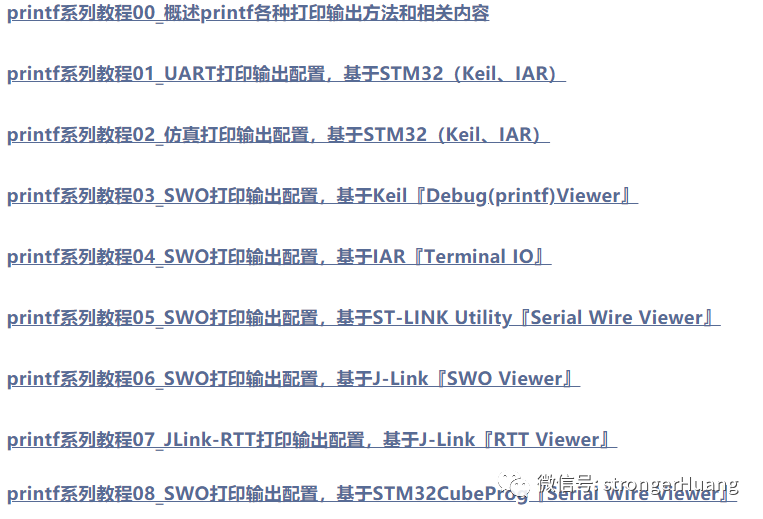
4CLI Debug Output Information
The above methods are purely for outputting debug/log information, a relatively advanced approach is to obtain debug information through CLI (Command Line Interface) commands.
Most people are familiar with command lines, those doing embedded development know that a Linux terminal is a command line, but the command line we’re referring to here is much simpler compared to a Linux terminal.However, the principle is similar, both involve inputting commands to view data or perform an action.
1. Advantages over printf
Through CLI, you can view specified information and perform certain operations at any time.
2.Disadvantages compared to printf
It requires integrating CLI components and the corresponding code (for viewing, executing actions, etc.), which consumes more resources. (Of course, lightweight CLI can be used, which consumes relatively little resources)
For example, one I used previously estimated to occupy less than 1K of Flash space:
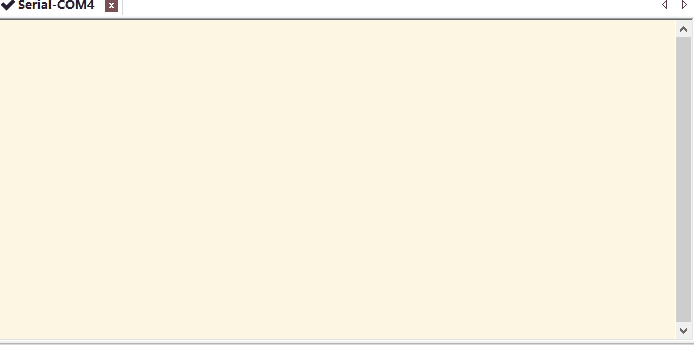
In fact, many RTOS have integrated CLI components, and using them is not as complicated as imagined; it is similar to porting RTOS, or even simpler.
Due to time and space limitations, I will stop here; there is still much to share about CLI, and if time permits, I will try to share more related content.
Reply ‘ Embedded Software Design and Development ‘ in the background to read more related articles.
Welcome to follow my public account, reply “Join Group” to join the technical exchange group according to the rules, reply “1024” to see more content.
Welcome to follow my video account:

Click “Read Original” for more shares, and feel free to share, bookmark, like, and view.

